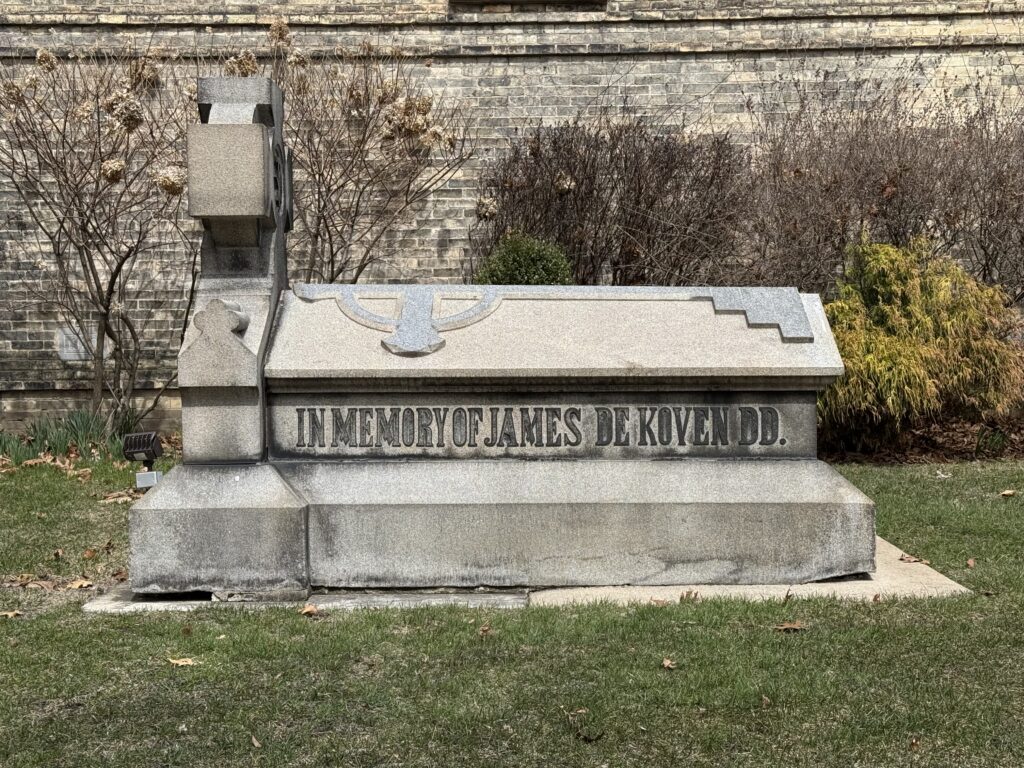When I heard that the former archivist at the DeKoven Foundation wrote a biography of the Rev. Dr. James DeKoven, I could hardly wait to read it. It is even better than I had hoped for. Please see my book review below:
James DeKoven: Diary of a Famous Yet Forgotten Man
By John E. Magerus
Publisher: Wipf & Stock, Eugene, Oregon, 2025
John E. Magerus skillfully fills in the blanks with his well-researched and comprehensive biography, James DeKoven, Biography of a Famous Yet Forgotten Man. Drawing on his years of being a university professor and administrator, and then spending eight years as the archivist at the DeKoven Foundation, Magerus is uniquely qualified to write the first full-length biography of James DeKoven.
I grew up in Racine, Wisconsin, and spent a lot of time wandering around the grounds of the DeKoven Foundation, which I learned used to be Racine College. I still love walking the campus and looking at the old buildings and trying to imagine what it would have been like to live and go to classes there. Over the years, I have learned a basic outline of the history of Racine College and about its most famous warden, the Rev. James DeKoven, and about his influence during the years he was there, 1859 to 1879. I know that Racine College declined after DeKoven’s death, dropped its college curriculum after a few years, and struggled along as a grammar school and military school until it finally closed in 1933.
In this 10-chapter, 267 page book, Magerus begins by showing the family and education that produced James DeKoven and shaped him into the successful and charismatic educator and important figure in the American Episcopal Church of the time. The DeKoven family were successful merchants in the silk trade with Chinese partners, and they speculated in real estate in what was to become Chicago and its suburbs. This success allowed James DeKoven to attend Columbia University and later the General Theological Seminary, both in New York City.
After graduating from seminary, James DeKoven’s mission to Wisconsin began with three years at Nashotah where we see him devoting his own wealth to founding St. John’s Hall in 1857. In 1859, DeKoven and 28 boys and young men came to Racine to merge with Racine College, and to begin what would become his life’s work in Racine.
When DeKoven arrived at Racine College, there were two buildings, Kemper Hall and Park Hall. Park Hall had not been finished or occupied. By DeKoven’s death in 1879, Kemper Hall and Park Hall had been joined into one long building on the east side of the quadrangle, Taylor Hall had been built and rebuilt, the Chapel of St. John had been built as a copy of a chapel that DeKoven admired in England, and the gymnasium was built specifically so that students would get into less trouble during the long winters.
James DeKoven became more and more well known in his church partly because of his success in building up Racine College and partly because of his participation in the annual conventions of what was known as the Protestant Episcopal Church in the United States of America at the time. DeKoven was elected bishop more than once but never served as a bishop. Magerus skillfully explains the two main factions in the church at the time, the High Churchmen vs the Evangelicals, and how these factions affected DeKoven’s life.
While reading this book the first time, I found myself peeking at the bibliography over and over. I was so happy to see sources that the author had found which I had never heard of before, especially those sources that are not available online, because I am used to doing all my Racine history research online, and John Magerus has opened up a whole new world of information to me. Even people who have been studying Racine history for a long time will appreciate the amount of information the author has gathered together.
What about people who are newly interested in the life of James DeKoven, maybe those who saw his grave next to his Chapel of St. John and want to know more about this man? I would say that this book is dense but accessible, especially Chapter 5, “James DeKoven, Educator at Racine College.” The vivid descriptions of life on campus and in the school rooms and in the dining room, make this book a perfect companion for people walking the grounds and discovering Racine College and its warden for the first time.

